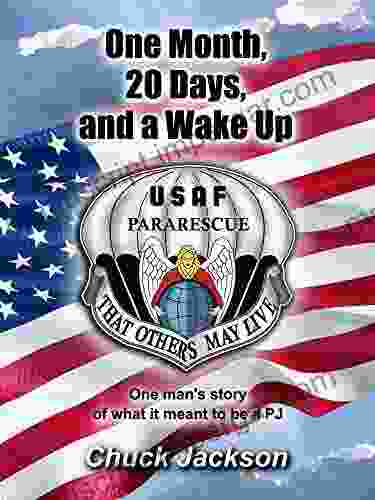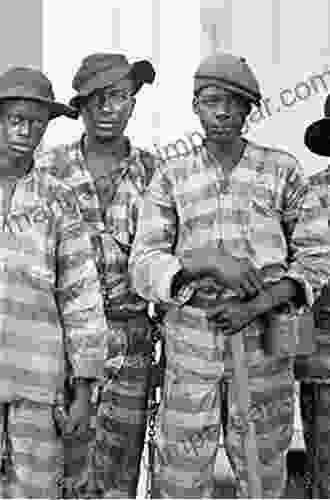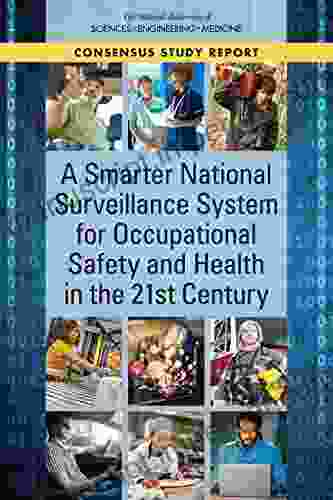A Smarter National Surveillance System for Occupational Safety and Health in the U.S.

The Need for a Smarter System
The current national surveillance system for occupational safety and health in the U.S. is fragmented and incomplete. It relies heavily on voluntary reporting, which means that many injuries and illnesses go unreported. The data that is collected is often not standardized, making it difficult to compare data from different sources.
4.5 out of 5
| Language | : | English |
| File size | : | 9886 KB |
| Text-to-Speech | : | Enabled |
| Screen Reader | : | Supported |
| Enhanced typesetting | : | Enabled |
| Word Wise | : | Enabled |
| Print length | : | 310 pages |
This lack of a comprehensive and accurate surveillance system makes it difficult to identify the most serious occupational safety and health hazards, track trends over time, and evaluate the effectiveness of prevention programs. As a result, workers are not as well-protected as they could be.
A Smarter System
A smarter national surveillance system for occupational safety and health would be one that is:
* Comprehensive: It would collect data on all occupational injuries and illnesses, regardless of severity. * Accurate: It would use standardized data collection methods to ensure that the data is reliable. * Timely: It would collect data in a timely manner so that it can be used to inform prevention programs and policies. * Accessible: It would make data available to researchers, policymakers, and the public so that it can be used to improve occupational safety and health.
Benefits of a Smarter System
A smarter national surveillance system for occupational safety and health would have a number of benefits, including:
* Improved prevention: A better understanding of the occupational safety and health hazards that workers face would allow us to develop more effective prevention programs. * Earlier intervention: By tracking trends over time, we could identify emerging hazards and intervene before they cause serious injuries or illnesses. * More effective evaluation: A better surveillance system would allow us to evaluate the effectiveness of prevention programs and policies so that we can make improvements. * Better protection for workers: A smarter surveillance system would help us to ensure that workers are better protected from occupational injuries and illnesses.
How to Create a Smarter System
Creating a smarter national surveillance system for occupational safety and health will require a concerted effort from all stakeholders, including government agencies, businesses, labor unions, and researchers.
The following are some key steps that need to be taken:
* Establish a national standard for data collection: All data collected on occupational injuries and illnesses should be standardized so that it can be compared from different sources. * Create a central repository for data: All data collected on occupational injuries and illnesses should be stored in a central repository so that it can be easily accessed by researchers, policymakers, and the public. * Invest in research: More research is needed to develop new and better ways to collect and analyze data on occupational injuries and illnesses. * Educate employers and workers: Employers and workers need to be educated about the importance of reporting occupational injuries and illnesses so that the data collected is accurate and complete.
A smarter national surveillance system for occupational safety and health is essential to protecting workers from injuries and illnesses. By taking the steps outlined in this article, we can create a system that is comprehensive, accurate, timely, and accessible. This will allow us to better identify hazards, track trends, and evaluate the effectiveness of prevention programs. Ultimately, a smarter surveillance system will help us to better protect workers and ensure that they have a safe and healthy workplace.
4.5 out of 5
| Language | : | English |
| File size | : | 9886 KB |
| Text-to-Speech | : | Enabled |
| Screen Reader | : | Supported |
| Enhanced typesetting | : | Enabled |
| Word Wise | : | Enabled |
| Print length | : | 310 pages |
Do you want to contribute by writing guest posts on this blog?
Please contact us and send us a resume of previous articles that you have written.
 Book
Book Novel
Novel Page
Page Chapter
Chapter Text
Text Story
Story Genre
Genre Reader
Reader Library
Library Paperback
Paperback E-book
E-book Magazine
Magazine Newspaper
Newspaper Paragraph
Paragraph Sentence
Sentence Bookmark
Bookmark Shelf
Shelf Glossary
Glossary Bibliography
Bibliography Foreword
Foreword Preface
Preface Synopsis
Synopsis Annotation
Annotation Footnote
Footnote Manuscript
Manuscript Scroll
Scroll Codex
Codex Tome
Tome Bestseller
Bestseller Classics
Classics Library card
Library card Narrative
Narrative Biography
Biography Autobiography
Autobiography Memoir
Memoir Reference
Reference Encyclopedia
Encyclopedia Michael Pearl
Michael Pearl Christine Adolph
Christine Adolph Molly Absolon
Molly Absolon Erika Mary Robb Larkins
Erika Mary Robb Larkins Pamela G Hobbs
Pamela G Hobbs Riki Therivel
Riki Therivel Gail Jacobs
Gail Jacobs Charlotte Brabbin
Charlotte Brabbin Chris Avore
Chris Avore Robert Aitken
Robert Aitken Lee Hardy
Lee Hardy Fang Wang
Fang Wang Christopher Kemp
Christopher Kemp Chip Heath
Chip Heath Christopher St Patrick Brown
Christopher St Patrick Brown Jedediah Purdy
Jedediah Purdy Charles Royster
Charles Royster Ring Lardner
Ring Lardner Chris Gallelli
Chris Gallelli Charles Hamm
Charles Hamm
Light bulbAdvertise smarter! Our strategic ad space ensures maximum exposure. Reserve your spot today!

 Bret MitchellSuffolk Downs by Christian Teja: Uncovering the Hidden Treasure of Boston's...
Bret MitchellSuffolk Downs by Christian Teja: Uncovering the Hidden Treasure of Boston's...
 Gene SimmonsHoliness for Housewives and Other Working Women: A Spiritual Guide for the...
Gene SimmonsHoliness for Housewives and Other Working Women: A Spiritual Guide for the... Salman RushdiePandas: The Iconic Animals of the Wild and Captivating Photography of Chris...
Salman RushdiePandas: The Iconic Animals of the Wild and Captivating Photography of Chris... Dwight BlairFollow ·10.2k
Dwight BlairFollow ·10.2k Jayden CoxFollow ·8.3k
Jayden CoxFollow ·8.3k Eddie PowellFollow ·8.1k
Eddie PowellFollow ·8.1k Geoffrey BlairFollow ·18.1k
Geoffrey BlairFollow ·18.1k Milan KunderaFollow ·17.9k
Milan KunderaFollow ·17.9k Albert CamusFollow ·7.2k
Albert CamusFollow ·7.2k Fabian MitchellFollow ·13.7k
Fabian MitchellFollow ·13.7k Brandon CoxFollow ·18.6k
Brandon CoxFollow ·18.6k

 E.E. Cummings
E.E. CummingsOne Man's Story of What It Meant to be Pj
In the tapestry of life,...

 Caleb Long
Caleb LongPattern Theory in Video Keno: Unveiling the Art of...
Embark on an enlightening journey into the...

 Douglas Adams
Douglas AdamsUnveiling the Diplomatic Landscape: The Ottoman Empire,...
Delving into the History...

 Terry Bell
Terry BellThere Still Is No Off Season: Embracing Year-Round...
In a world consumed by routine and the allure...

 Ibrahim Blair
Ibrahim BlairBrain Teasers Games and Puzzles: Exercise Your Mind with...
Prepare to embark on a captivating journey...
4.5 out of 5
| Language | : | English |
| File size | : | 9886 KB |
| Text-to-Speech | : | Enabled |
| Screen Reader | : | Supported |
| Enhanced typesetting | : | Enabled |
| Word Wise | : | Enabled |
| Print length | : | 310 pages |








